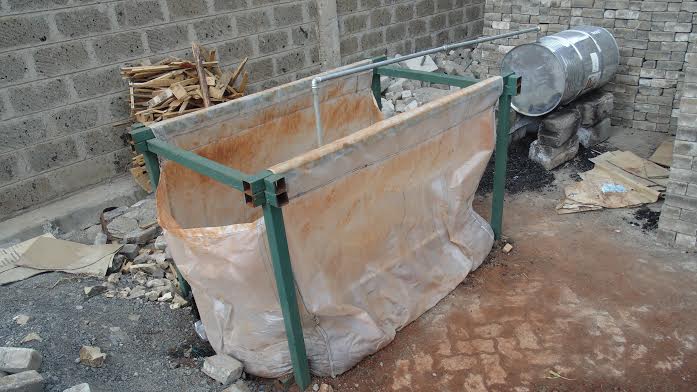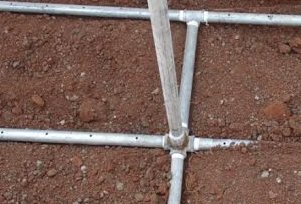An agronomist has introduced a cheap way of steaming soil, killing over 90 percent of bacteria and other disease causing organisms in the soil which are responsible for the increasing wilt diseases among greenhouse farmers costing them fortunes. The steaming doesn’t affect the nutrients in the soil.
The introduction of the greenhouses which are famously branded as Amiran Farmers Kits was thought to be the end of the food security problems in addition to boosting household incomes. However, many of the clients who adopted the kits have been struggling with emerging issues. It is this turn of events that have prompted Mutuni Christopher an agronomist working with Amiran to source for an ideal solution to continue keeping clients happy.
“After doing a survey among our farmers to ascertain the major challenges they were grappling with, we realized that majority of the farmers were faced with bacterial wilt which is as a result of micro organisms in the soils which curtail any success that these farmers had hoped to get from their smart farming initiatives.
The high level of destruction the bacteria cause to the crops have earned them a more seemingly dreaded title. “These micro organisms in the soils which we mostly refer to as HIV virus of the soil can cause up to 100 percent losses to a farmer depending on their intensity in the soil. These problems has been on the rise and although some farmers are advised to conduct the more affordable soil solarization, the technology is at times not convenient especially to farmers who are located in areas that rarely receive intense heat from the sun or to those who wish to plant during rainy seasons,” explained Mutuni.
 According to him, he then had to devise a method that was ideal for killing this disease causing micro organism in the soil any time of the year without relying on sun availability hence the birth of the soil steaming technique.
According to him, he then had to devise a method that was ideal for killing this disease causing micro organism in the soil any time of the year without relying on sun availability hence the birth of the soil steaming technique.
The soil steaming equipment developed by Mutuni is mainly made up of a metallic drum with piping systems that are then inserted in the steaming kiln.
The steaming kiln is composed of a solar rig cover. The steaming kiln can accommodate about two wheelbarrow of soil although the size may vary depending on the needs of a farmer. The base of the piping system is connected to about four sub-pipes. Each sub-pipe is drilled with about five holes facing upwards. The cost of constructing the kiln varies depending on one’s sourcing of materials and fabrication labour cost.
The kiln is filled with soil covering the sub-pipes and the kiln covered tightly with another solar rig cover. “The ratio of soil and manure being filled in the kiln should be at 1:1,” added Mutuni. The drum is filled with about three quarters of water and the lid tightly covered to ensure that there is no gas leaking from it. Mutuni explained that one then starts heating the water in the drum boiling it for about four hours.
“At the end of the exercise, over 90 percent of the disease causing micro-organisms is killed and the soil mixture is ready for use although farmers are advised to use soil bags. “Once the soil is steamed in the right way it can last for over two seasons with yields being steady and one not seeing any menace of the wilt diseases,” said Mutuni.
 According to research done by KARI, the most affected soils by the disease causing micro organisms are in Nyanza and Western regions of the country although farmers are advised to always conduct a soil analysis to ascertain the extent of damage of their soils. “Soil analysis is very vital for any farmer who is venturing into the smart especially given the high investments being made. These disease causing bacteria mostly affect tomatoes and green pepper.” The technology has already been demonstrated and adopted to farmers in Kisumu, Kiambu and Machakos.
According to research done by KARI, the most affected soils by the disease causing micro organisms are in Nyanza and Western regions of the country although farmers are advised to always conduct a soil analysis to ascertain the extent of damage of their soils. “Soil analysis is very vital for any farmer who is venturing into the smart especially given the high investments being made. These disease causing bacteria mostly affect tomatoes and green pepper.” The technology has already been demonstrated and adopted to farmers in Kisumu, Kiambu and Machakos.